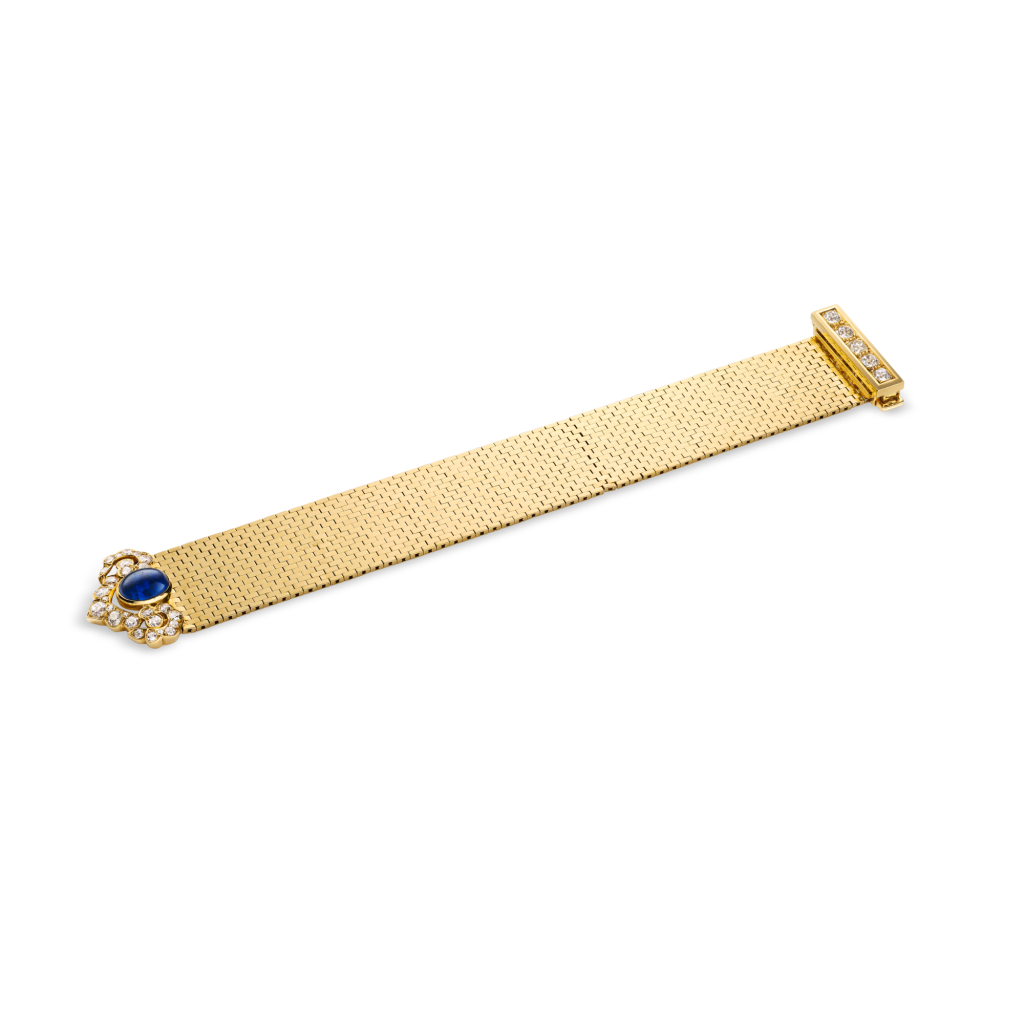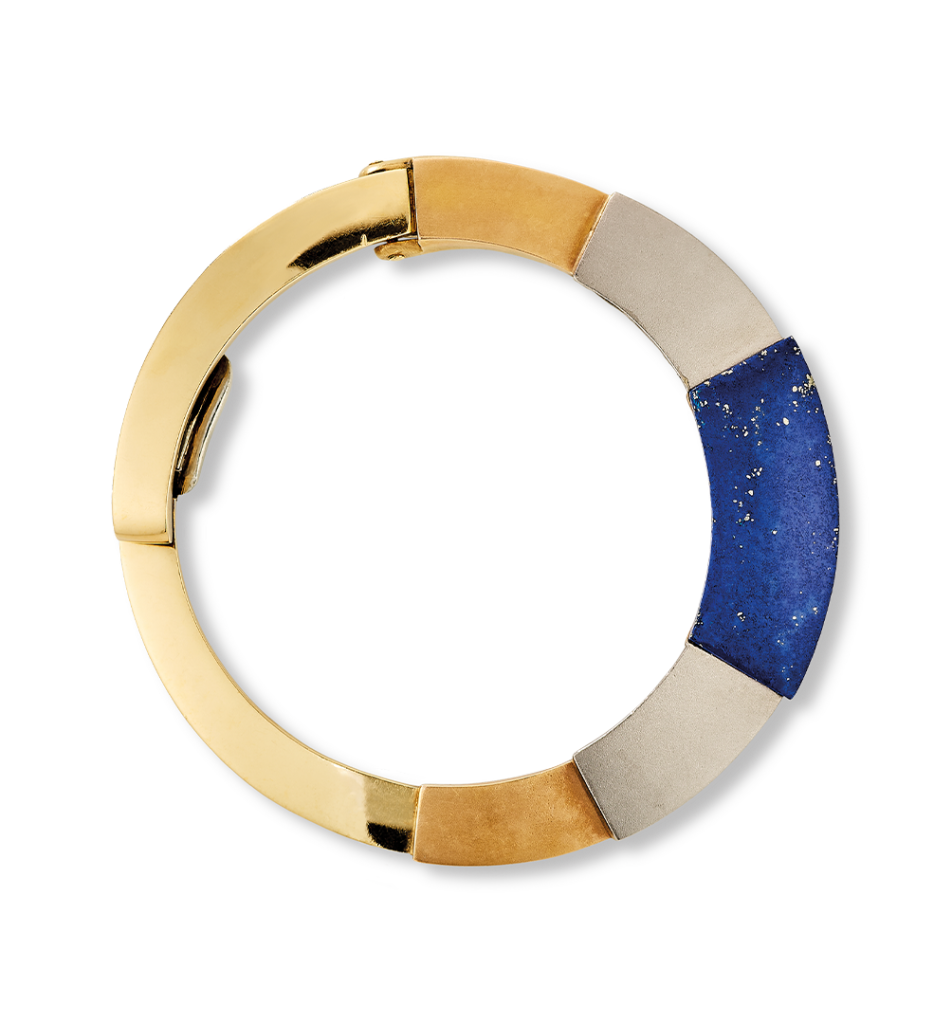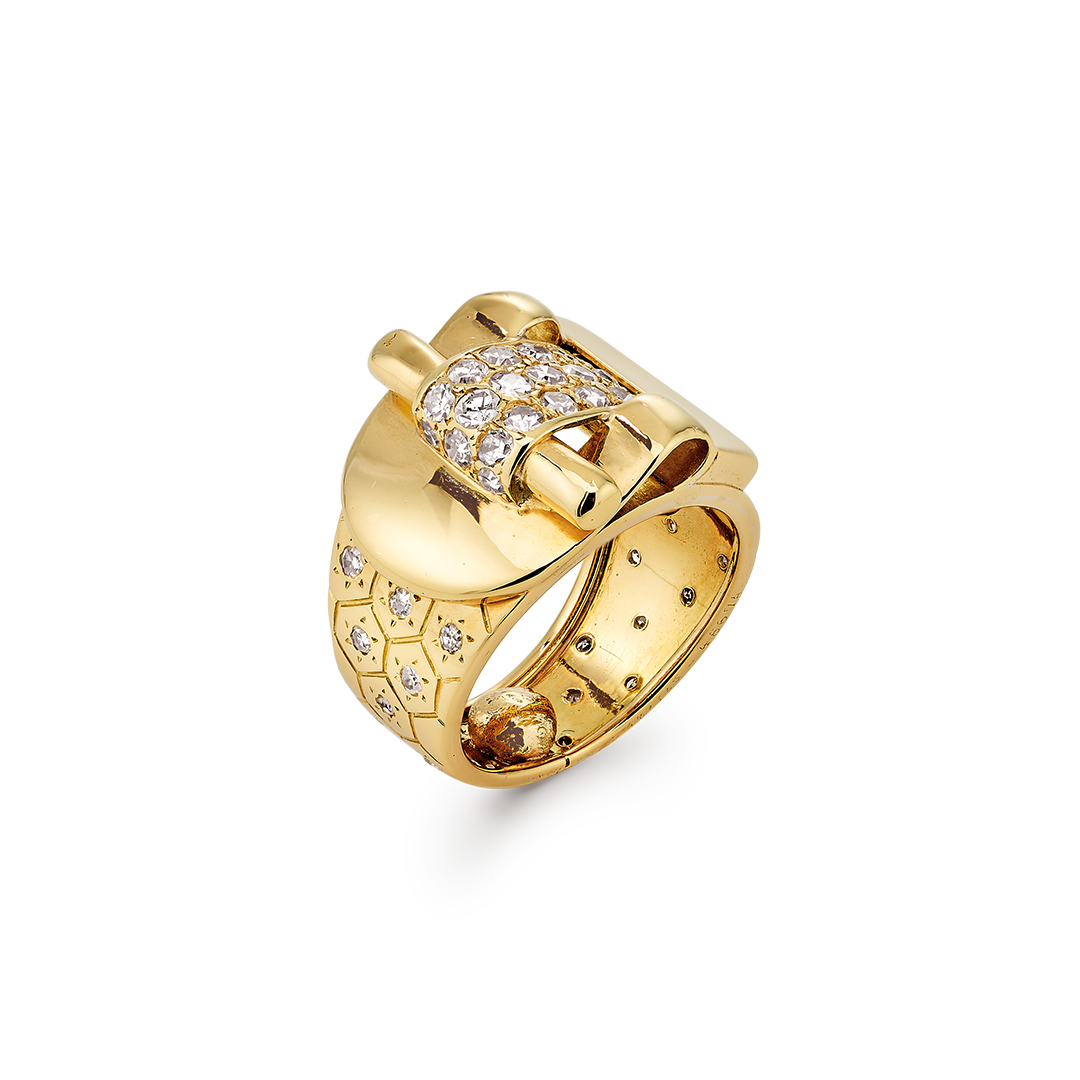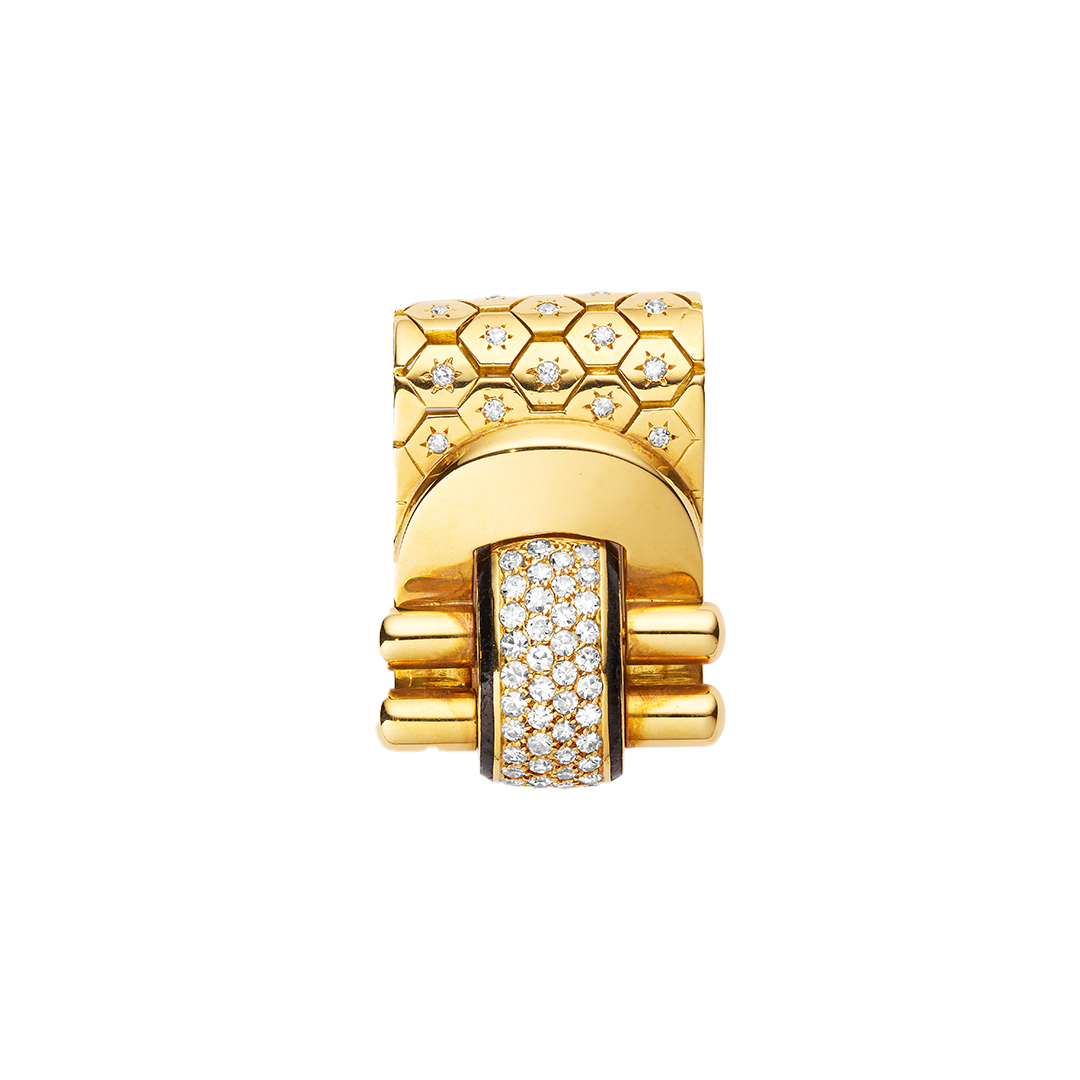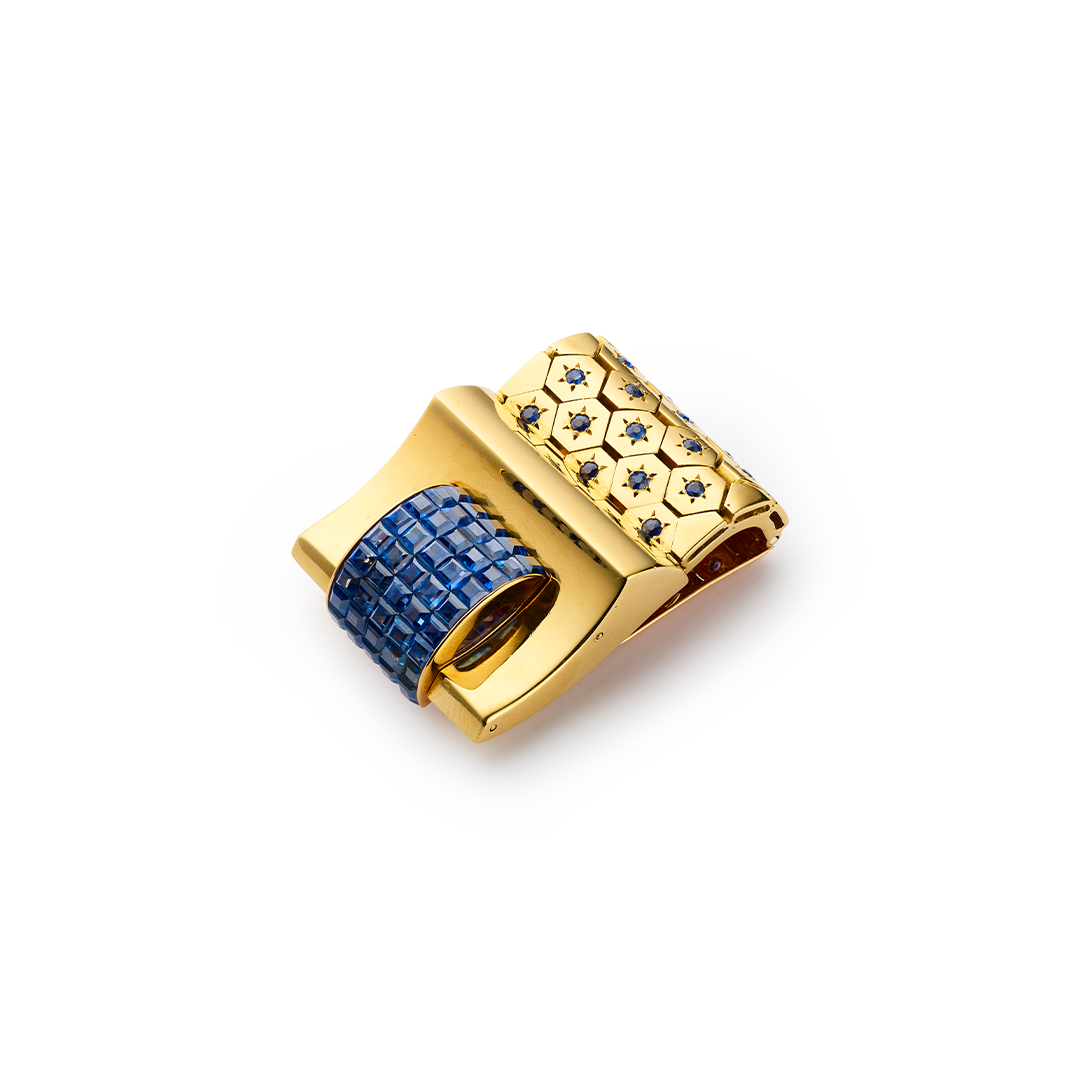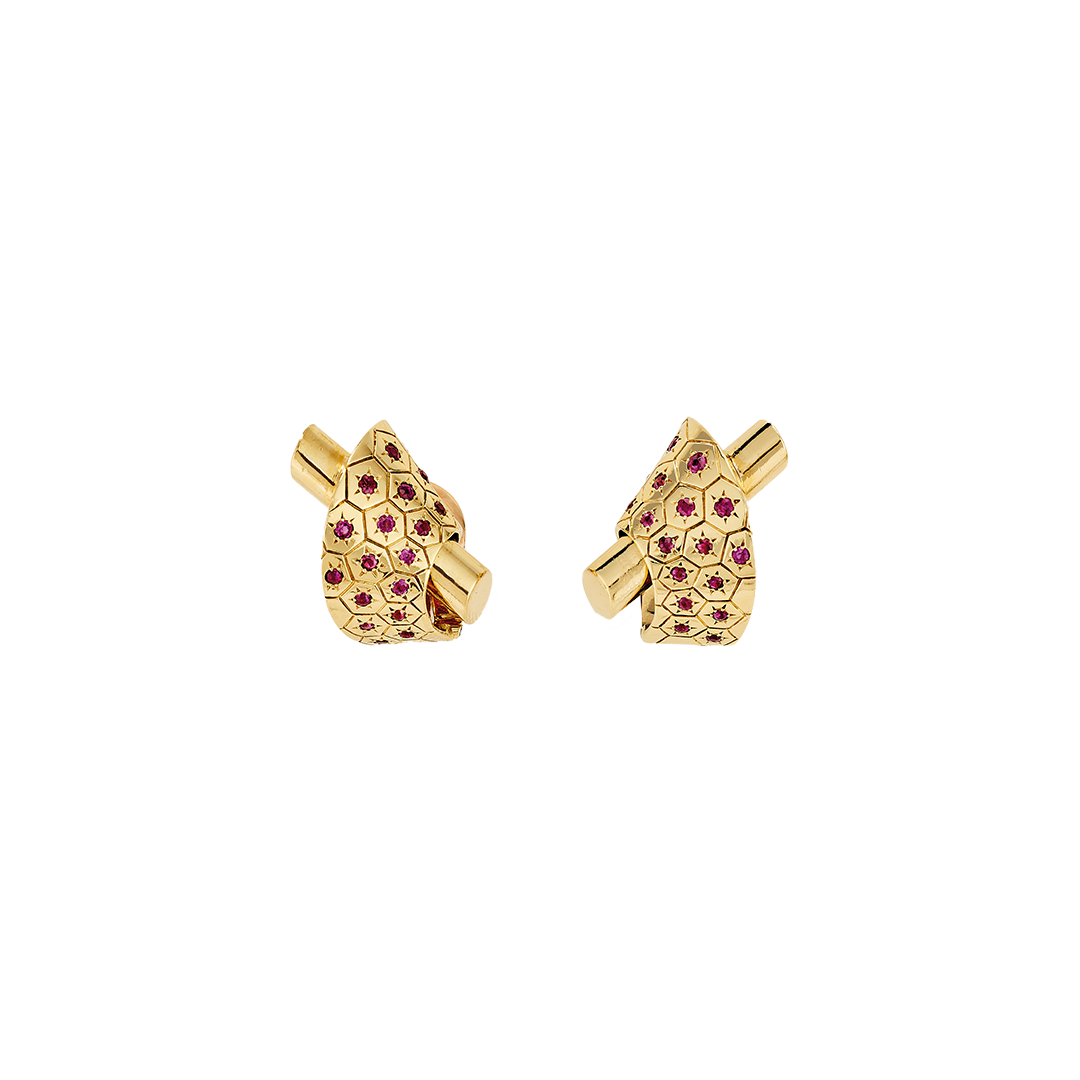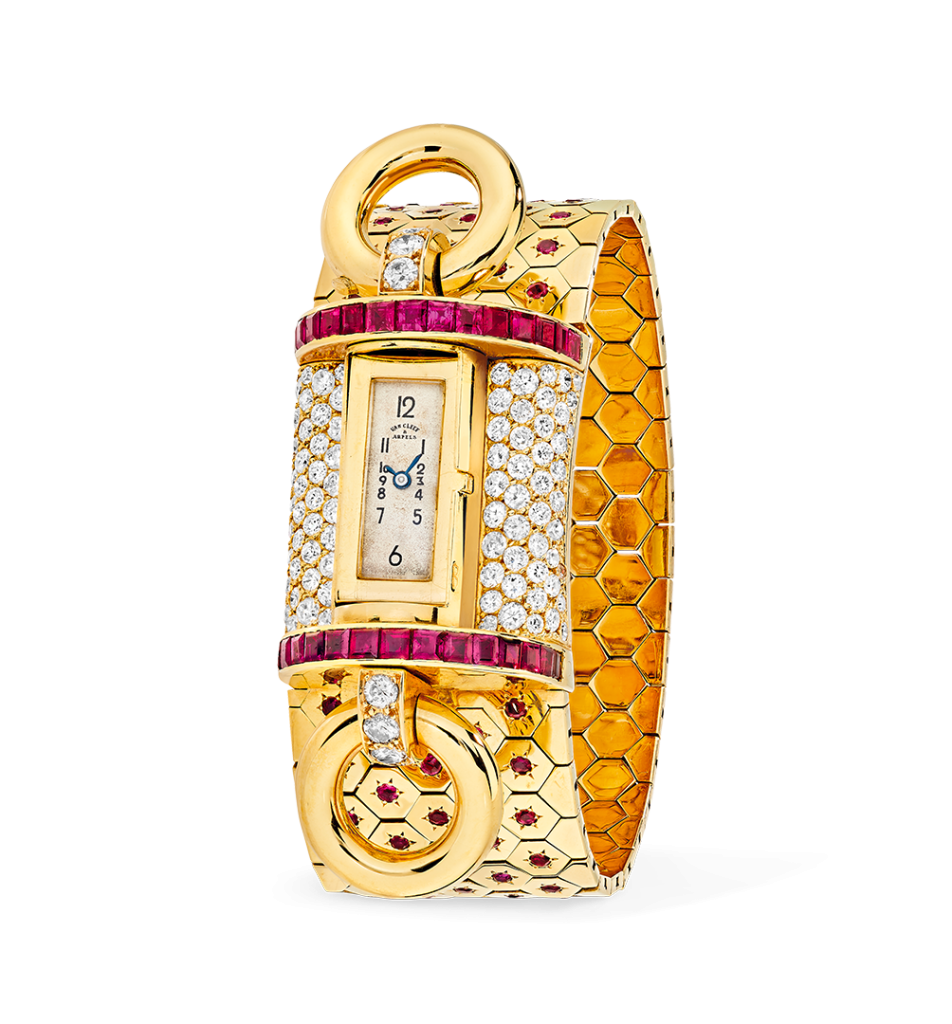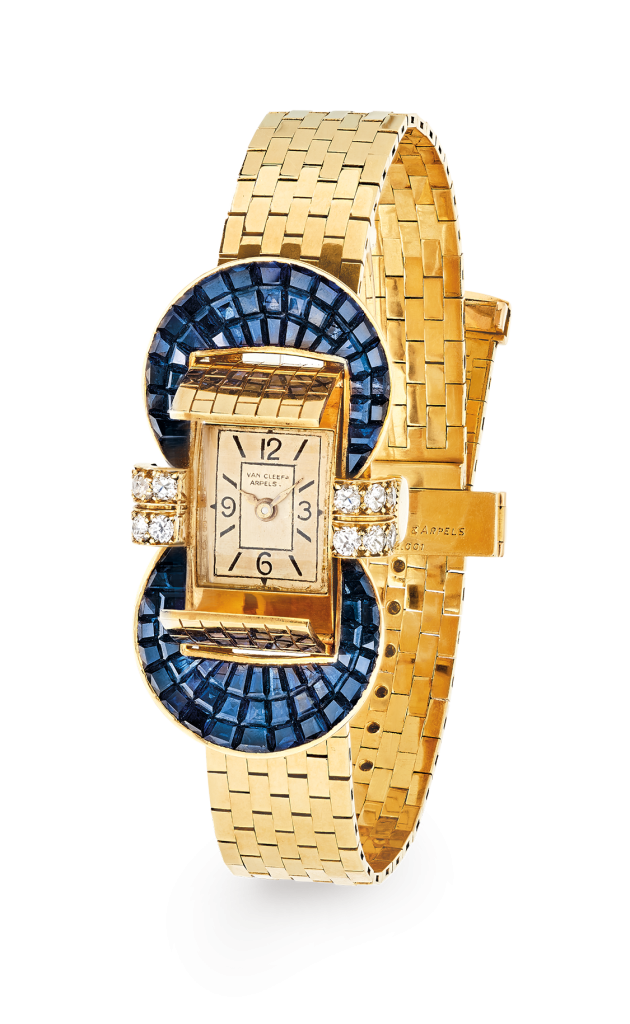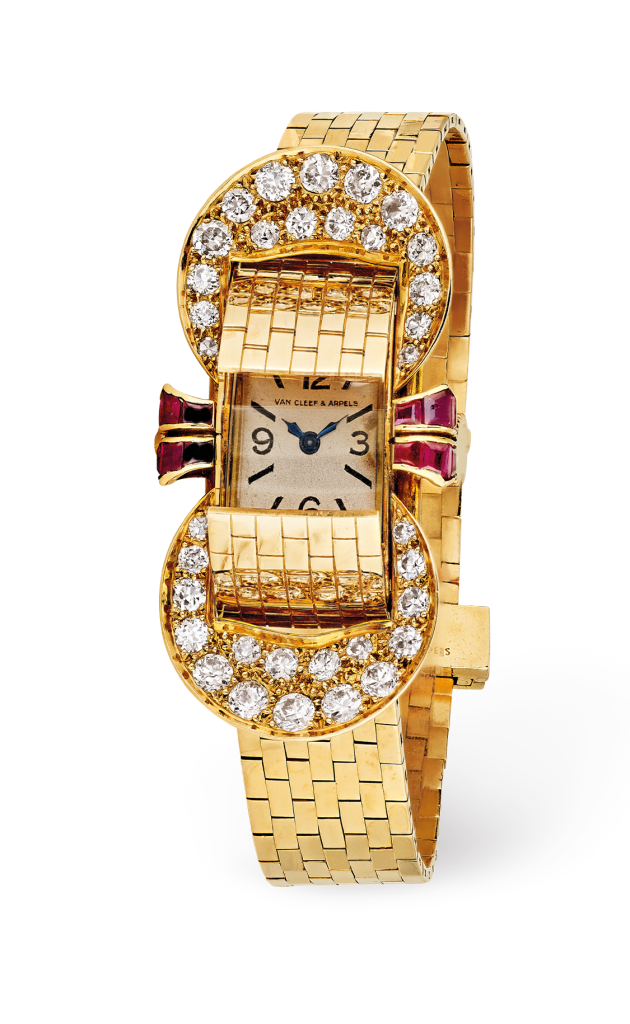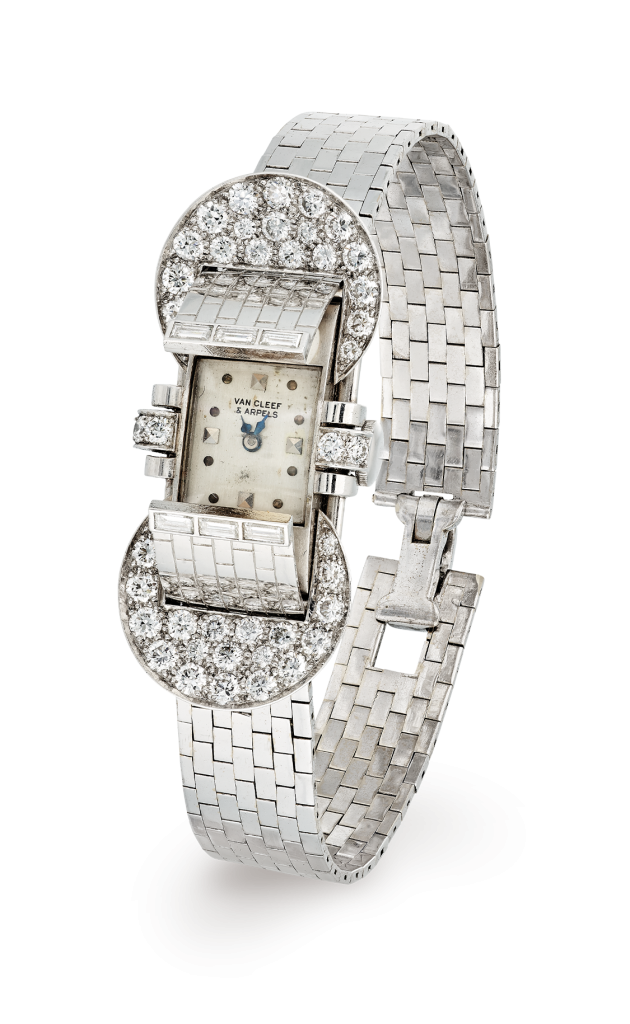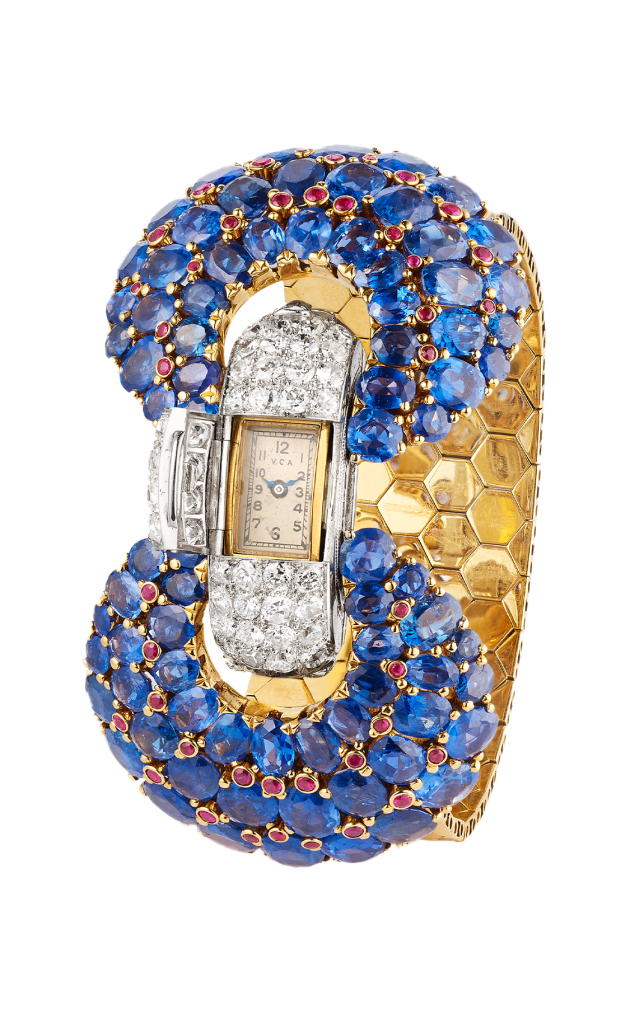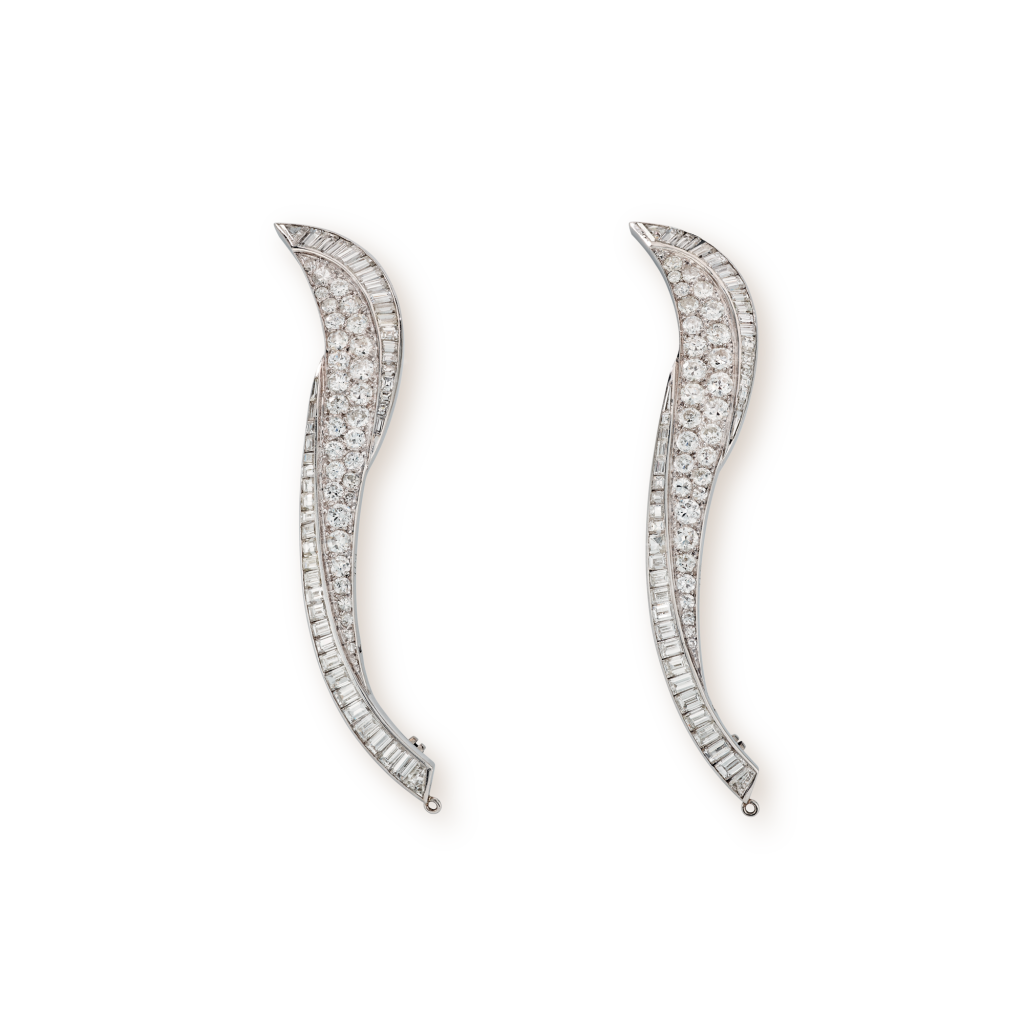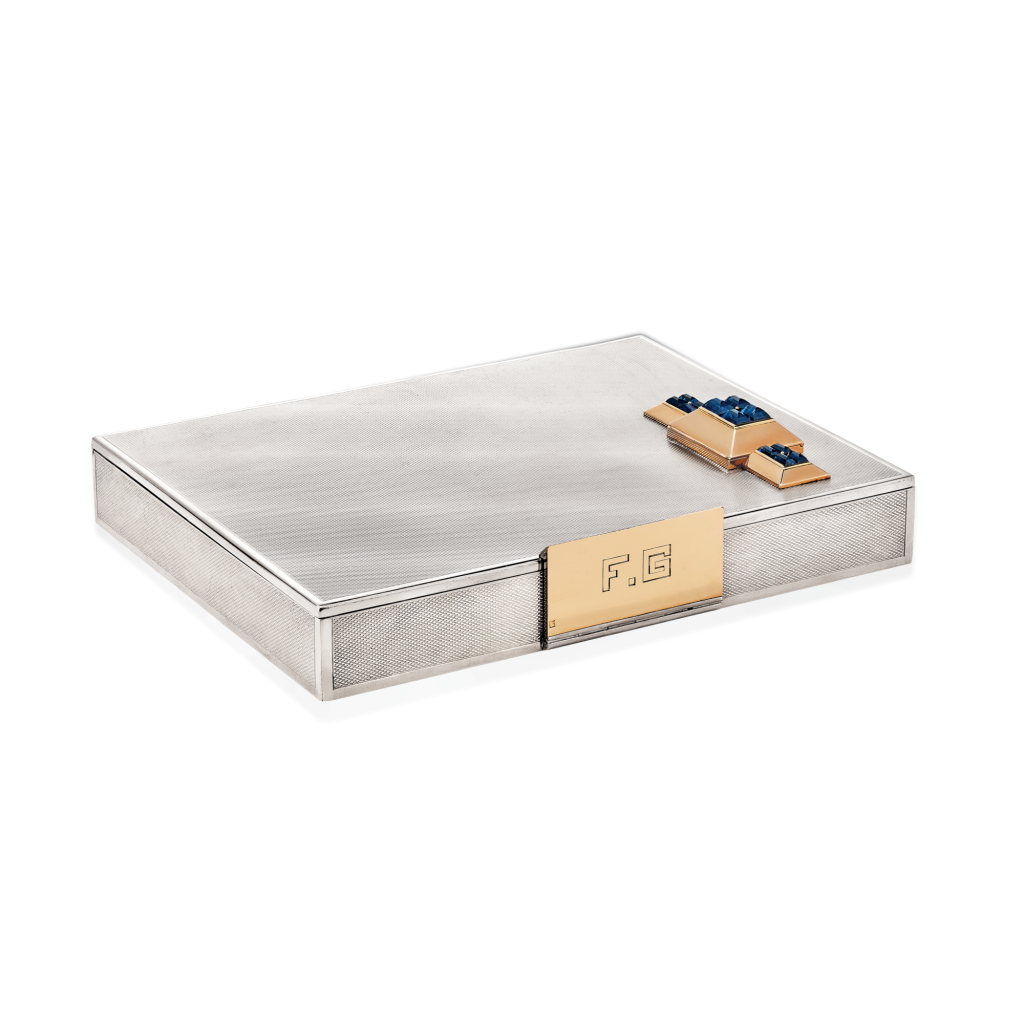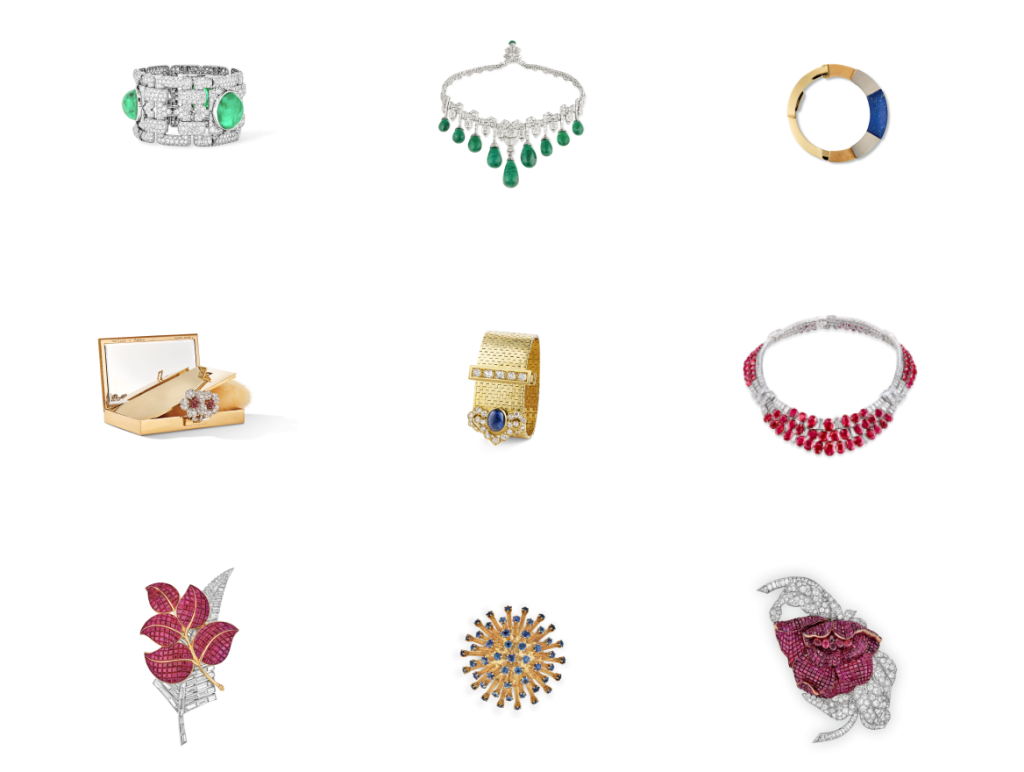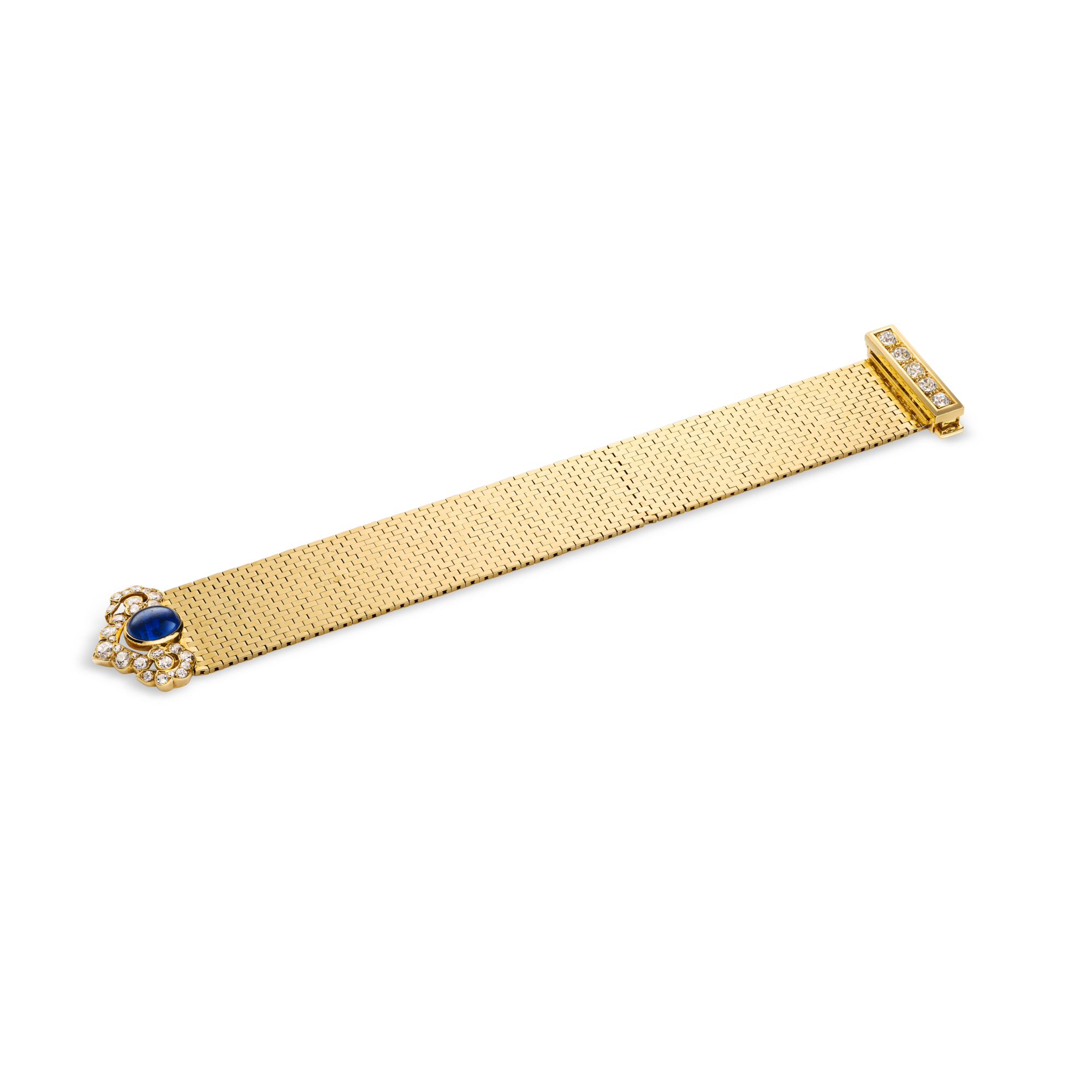
Ludo bracelet
Creation details
- Creation year 1934
- Stone Diamond
- Stone Sapphire
- Material Gold
- Usage Bracelet
- Dimensions 210 × 37 mm
The Ludo bracelet is an iconic piece that typifies a production method combining jewelry art and serial production. It also witnessed—possibly more than any other of the Maison’s creations—the stylistic and formal evolutions that occurred in jewelry over several decades.
The first Ludo bracelet, commercialized by Van Cleef & Arpels in 1934, was characterized by an extremely flexible mesh formed by a system of polished yellow gold brick shapes arranged in an alternately interlocking pattern, similar to the stretcher bond used in architecture. The two ends of the bracelet were joined together by a rectangular buckle set with five brilliants, likening the bracelet to a belt. Ornamentation was added to this mesh-like base, adding variation in color and form. The model seen here ends with a closed-set oval sapphire cabochon from which perforated volutes of brilliant-cut diamonds mounted on yellow gold extend. This motif with its cut-out profile is reminiscent of lacework or guipure lace, both in the complexity of its openwork contours and in the choice of white stones. The Maison’s archives bear witness to the diversity of ornamental language used on the Ludo bracelets. The variously stylized volutes and rinceaux are echoed by the endless variations in the number, size, and color of the different stones, which result in numerous alternatives, each unique, although based on the same artistic model.
Serialism and functionalism
This notion of creating a range of forms for the same bracelet echoes a new approach to production that emerged in the decorative arts during the 1920s and 1930s. Serialism and functionalism, praised by Walter Gropius at the Bauhaus, among others, incited furniture designers to form partnerships with the world of industry to diffuse their work on a larger scale and to a wider public. This is proven in the furniture designed by Marcel Breuer and René Herbst, and produced by Thonet1For the first prototype of the Club B3 armchair, Marcel Breuer created in Berlin, in 1926, and in collaboration with Kalman Lengyel, member of the Bauhaus, the firm Standard Möbel, which was bought by the Austrian company Thonet in 1929. The latter chose to pursue its partnership with Breuer. and Labormétal as early as the 1920s. The jewelry arts were to echo this at the start of the 1930s, immediately after the financial crisis of 1929.
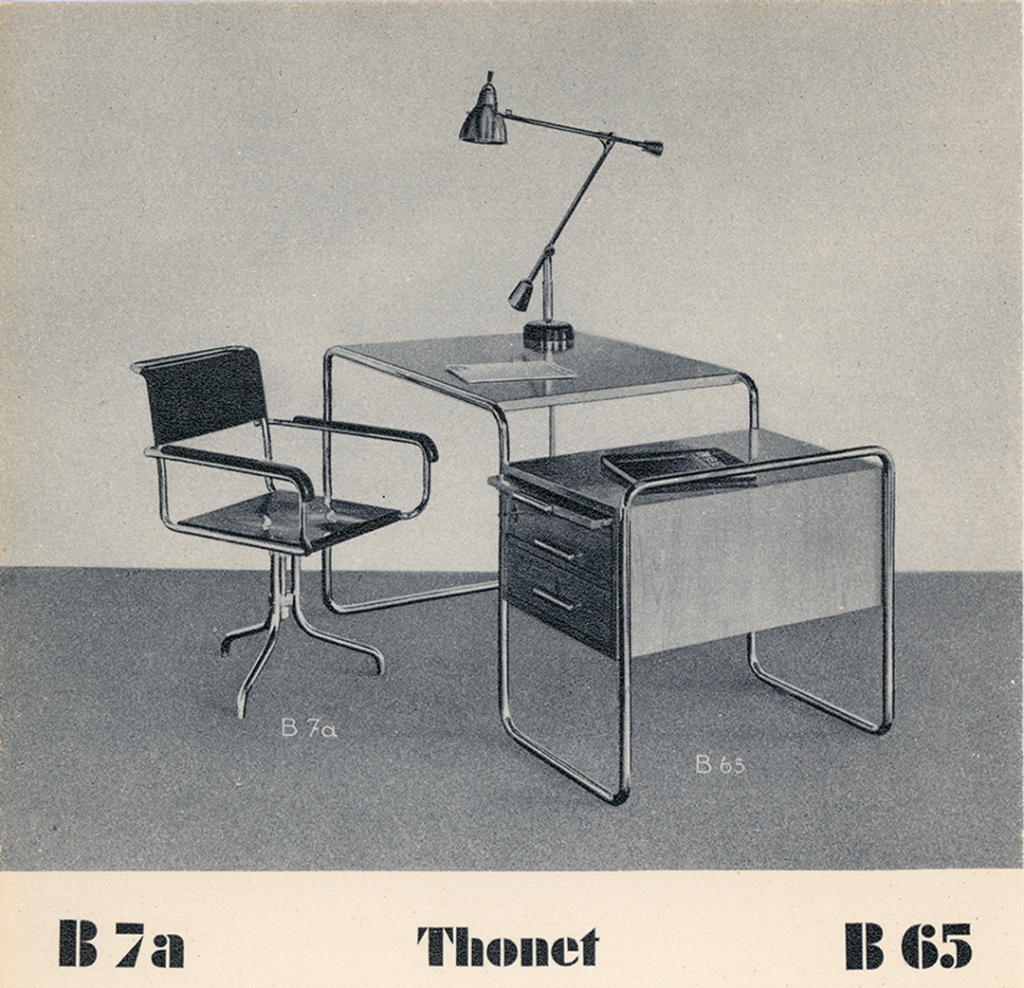
The serial production applied to the Van Cleef & Arpels creation
It was within this context that Maison Van Cleef & Arpels became interested in the question of serial production and began producing pieces in a range of different versions based on a common model. This was the case for the Circle brooch from 1930, the Radiator watch in 1931, and the Ludo bracelet in 1934, for which the brick-pattern mesh was produced by the meter in Italian workshops.
The evolution of the Ludo bracelet
In addition to this research into creating ranges, the desire to experiment with new techniques of meshing was also seen with regard to the Ludo bracelet as early as 1935, just a year after its creation. The resulting bracelet displayed a mesh system with hexagonal units in place of the earlier rectangular ones. Each hexagon was emphasized by a gem at its center. The motifs for the buckle adorning the end of the bracelet were also redesigned. In place of the stylized lacework designs with curves and delicate openwork, simple overlapping geometric motifs were to be found, with solid surfaces given volume by the pronounced use of metal. The strong contrast of volumes was reinforced by the use of pave-setting and the mystery set technique that created large areas of uniform color.
INVENTION OF MYSTERIOUS SET TECHNIQUE
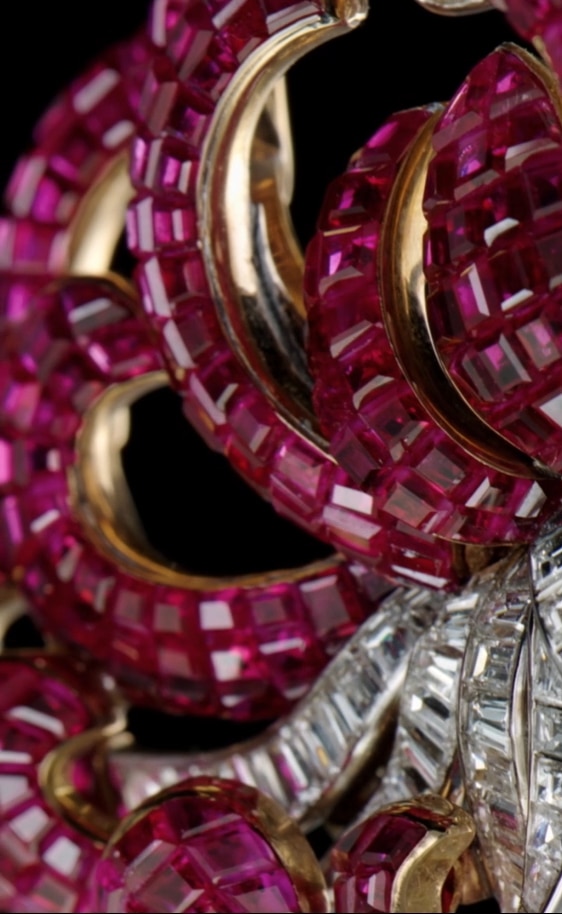
Like the Circle brooch, but to a lesser degree, the Ludo bracelet illustrates the dual inspiration that a creation can lay claim to. Indeed, while the Ludo bracelet, in its initial form, refers to a well-established decorative vocabulary of lacemaking that had been in use for several centuries, the second version borrows from the dictates proclaimed by the Union des artistes modernes that advocated starkness and simplification.
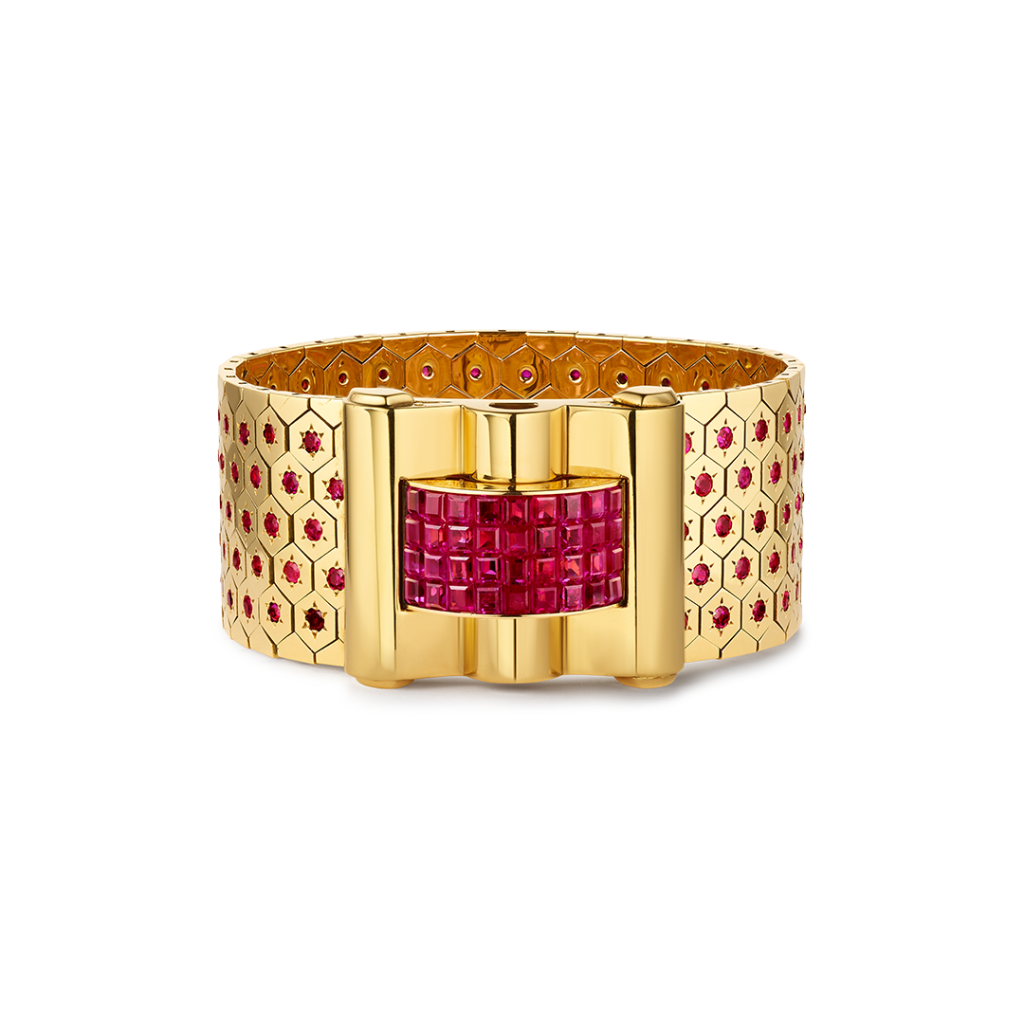
Variations of the Ludo bracelet
The Ludo bracelet also gave rise to a range of forms, starting with rings in 1935, followed by clips based on the Ludo hexagon model in 1936. The structured volumes of the hexagonal version lent themselves to numerous adaptations, be they rings or earrings, thus forming sets. These were followed, in 1937, by bracelet watches with hexagonal meshing.
With its variations in style and form, the Ludo jewelry range played an important role in Van Cleef & Arpels’ production in the second half of the 1930s. The range of different versions it afforded, ensured its posterity during the following decade, and helped it to become a significant collection within the Maison’s history. It attests to Van Cleef & Arpels’ ability to adapt to the economic fluctuations and technical contributions of its time, while conserving its creative agility.
To go deeper
